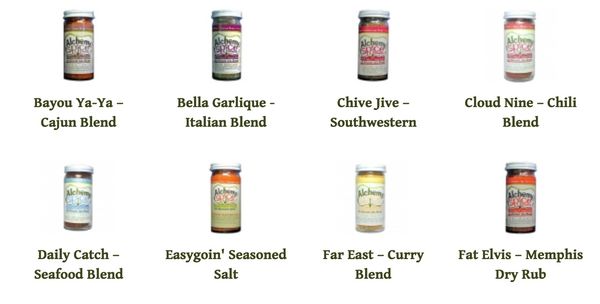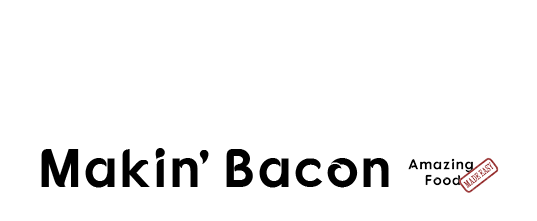 Written by Jason Logsdon
Written by Jason Logsdon
Types of Branded Merchandise Food Bloggers Can Create
Click to discover how to serve your Fans and grow your incomeI'm super excited to talk to you today about making branded merchandise and physical products. Physical Products are one of my favorite things to create. There's just something nice about reaching the end of the process and having something you can hold in your hands.
I feel like so much of what we do as bloggers is just moving data around that it's nice to create something tangible that will last longer than dinner.
Note: You can learn more about the power of products your readers need.

How to Create Them
I'll be talking about several types of products, but most can be made in one of two ways.
Making Products with a Print-on-Demand Company
The easiest is to use a print-on-demand (POD) service like Threadless. They run the website, collect the money, create the product, and ship it to the customer without any additional input from you. You just need to advertise it and direct people their way. I highly recommend starting with a POD company when you can. They have the lowest profit margins but are much easier to set up and use, and there is little to no risk involved.

Note: You can read more about How to Create a Shirt.
Making Products with a Custom Printer
Another option is to contract a printer or product creator directly. You will have to order in bulk, usually discounts kick in at 50, 100, 250, etc. You are also in charge of selling them from your website, collecting the money and shipping the product. So it's a lot more work, but you do get a lot larger cut of the money.
There are some product creators that will work with you on what is called "drop shipping", which means they will manage the inventory and shipping for you, but in general, unless you go with a print-on-demand company you'll have to manage much of the sales and shipping process yourself.
How to Create Designs
For the designs, you can create them yourself, which we did with several of ours, or it is also easy to outsource the designs, and we got several great ones from Fiverr.com for less than $40 a piece, which isn't a bad investment to put out an entire line of t-shirts, mugs and branded merchandise. 99designs is another great option, though they are more expensive. You can also lean on your readers and host a design contest, where they submit designs and you pick a few to use.
I'll take a look more closely at some of the items we offer, so you can get a feel for how you can go about creating some product lines.
Branded Merchandise
How many people do you know that go to a concert and come back with a great shirt highlighting the band? Well, why should rock stars be the only ones with awesome swag!?!? Be your own rockstar!

Selling t-shirts, aprons, and kitchen accessories is a pretty easy, but often overlooked, way to make some extra money from your food blog.
We have a ton of products for sale through Threadless, including shirts, mugs, notebooks, bags, and even phone cases. We also use a custom printer for some aprons.
Branded products work best if you have a tight community, especially one that has come to identify themselves with your brand.
It's also a great way to promote your own blog when you are at conferences, food events, or out on the town. So many people comment on my shirt and they are a great ice breaker, especially at a networking events like food conferences. It's also great to wear when you are making videos to further promote your brand without taking up screen space.

Note: You can read all about Using Threadless to Create Shirts.
Cooking Equipment
You can also put your branding on common kitchen equipment, like wooden spoons, spatulas, cutting boards, bottle openers, or even sous vide machines and pressure cookers, if you want to get crazy!

You can get inexpensive products from custom printers, or in bulk from websites like Alibaba. You can often customize them directly from the seller with your logo or branding on them. They are a good way to carry your message through to your readers, on the tools they may want to use. You can then sell them on your website, or even through Amazon.
Like a lot of branded things, these aren't going to be Le Creuset or All Clad quality, but they will be good enough to use, especially the less expensive items.
Your readers are buying them to feel a connection to you and your blog, not to have the best wooden spatula money can buy.
We have a line of "Sous vide drying cloths", which are dishcloths with a fun design on them. After you sous vide food, you need to dry it off before you sear it. We are honest with our audience, we don't tell them "this is the only way to dry your meat you have to buy these if you want to be successful", we let them know cheap paper towels work just fine, but if they want something a little more creative, a little more unique, we have these available. And people really love them.

Spices / Marinades
Many people don't realize that it is quite easy to have spices bottled with your name and logo on it. A spice company will have 10, 20 or 30 different blends that you can try out. You pick the one you like and then wrap it in your logo and branding.

Obviously, if you are a BBQ blogger and you are always preaching how your custom BBQ rub is the only way to go, this might not work well for you because you have to use the blends that they have available.
But if you write about quick and easy weeknight meals, you can probably find a few different blends that you really enjoy and would feel comfortable selling to your readers.
We've looked into several online sellers, and it's generally $4 to $5 per 4 oz. bottle, with a minimum order of 30-50 bottles. So it's not too expensive to try it out. Most "custom" spices can be sold for $9 to $14, leaving you some nice profit after shipping.
Many companies also do completely custom blends, but they are often much more expensive, and you need to purchase a larger inventory. So you better be certain there's a ton of demand for your fancy BBQ rub before you go that route.
Note: You can read my full writeup on how to sell custom spices on your food blog.
Cheat Sheets and Rulers
Another form of kitchen tool is a cheat sheet. This can take many forms, but ours was called the "Sous Vide Timing Ruler" and it's the most successful physical product we sell. It greatly simplifies the process of determining the correct length of time a tender piece of meat needs to be cooked, something newer sous vide cooks need to do almost every time they sous vide.

If you have something similar in your niche, where people consistently need certain information, then a product like this might be great.
Note: You can read about our process for how to design and sell a cheat sheet and our case study for the sous vide timing ruler.
Some Examples to Spark Ideas
Unless you know about sous vide, you may struggle using my timing ruler as a jumping off point. I wanted to provide a few more types of cheat sheets and rulers that may spark something in your niche.
- A list of pressure cooker times for various meats and vegetables
- Standard ratios for cookies, cakes, bread, etc.
- Glycemic Index values for specific foods
- Cooking times for various grains, beans, and legumes
- Gluten free substitution ratios for baking
- Common ratios for mother-sauce bases
- Base ratios for the 50 most common cocktails
If your readers are constantly looking up the same information, then this can be a huge help to them and a great way to grow your income.
Our total initial investment was about $500 and sold for $7.99. The day we sent our launch email we sold 192 rulers for a profit of $1,250, which fully recouped our initial investment. Last year we sold over $5,000 of rulers.
Starting Small
You can also test the waters with this product by offering an electronic version as a lead magnet or free giveaway. For years we actually offered the ruler in PDF form so people could print it out at home themselves. We used it as a lead magnet to get people to sign up for our courses. Once we realized how much people loved it, we decided to try the fancier version.

Summary: Branded Products For Food Bloggers
Even though most branded products don't have an upside that something like a book or cooking course does, they can be a great way for a food blogger to grow their income by serving their Fans with products that they want, and that will make them feel closer to your blog.
What branded merchandise are you interested in creating? Let me know in the Makin Bacon Facebook Group or the comments below.
 Hi, I'm Jason Logsdon! I'm an adventurous home cook and the head writer and photographer for Amazing Food Made Easy. I grew my income to 6-figures by focusing on serving my Fans by providing massive value, and I want to help you do the same.
Hi, I'm Jason Logsdon! I'm an adventurous home cook and the head writer and photographer for Amazing Food Made Easy. I grew my income to 6-figures by focusing on serving my Fans by providing massive value, and I want to help you do the same.














